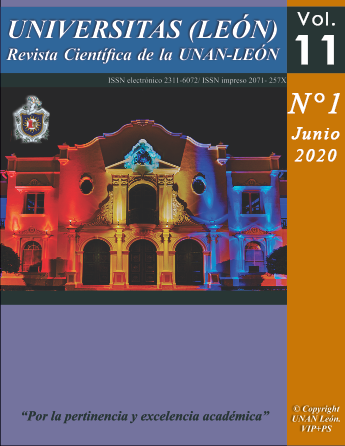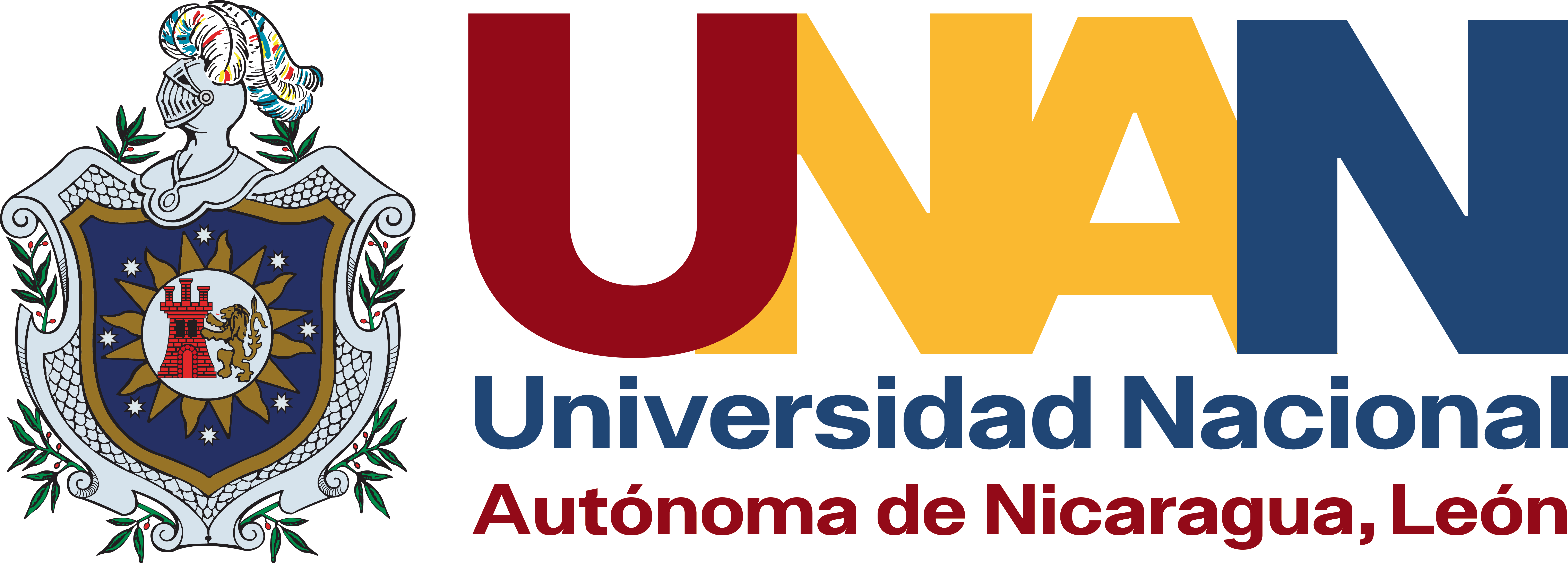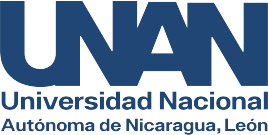Identificación de microorganismos patógenos como indicadores higiénico – sanitario en el proceso de obtención de pulpa de jícaro (Crescentia alata)
DOI:
https://doi.org/10.5377/universitas.v11i1.16291Palabras clave:
Crescentia Alata, microorganismos patógenos, inocuidad.Resumen
La planta de jícaro (Crescentia alata) es un árbol pequeño que puede alcanzar una altura entre los 6 y 13 metros. Produce frutos globosos que nacen directamente del tronco y de las ramas, los cuales tienen una corteza dura y en su interior contienen una pulpa de olor característico y sabor dulce, en medio de la cual se encuentran las semillas. (Ramírez et al., 2008). Los reportes científicos que avalen la calidad e inocuidad de este alimento son escasos. En esta investigación se identificó la presencia de microorganismos patógenos (Escherichia coli, Pseudomonas aeruginosa, Staphyloccocus aureus, Salmonella spp, mohos y levaduras), utilizando la técnica USP 36 – NF 31, la cual consiste en pre – enriquecimiento, enriquecimiento y medio selectivo para cada uno de los microorganismos, y así de esta manera valorar la inocuidad de la pulpa de jícaro (Crescentia alata). El estudio se llevó a cabo en la Comunidad de Cayanlipe, Municipio de Somotillo, Departamento de Chinandega, Nicaragua; se realizaron muestreos (N=5) no probabilístico por conveniencia. Se tomó muestras (n=28) in situ (hisopado) del producto, de los sacos de almacenado, y todo lo que este en contacto con el alimento, se realizó por duplicado. Los resultados obtenidos confirman que Escherichia coli (71.43%, n=28), Pseudomonas aeruginosa (50%, n=28), Staphyloccocus aureus (57.14%, n=28), Salmonella spp (42.86%, n=28), mohos (60.71%, n=28) y levaduras (57.14%, n=28), se encuentran presente en la pulpa de jícaro (Crescentia alata) procesada, producto del contacto directo o indirecto a material fecal, no realización de lavados previos al procesamiento100%, n=28
Descargas
Citas
Bush Larry. Manual MSD. Florida Atlantic University. 2015. Infecciones por Pseudomonas. USA
Daniel N. Frank,Leah M. Feazel,Mary T. Bessesen,Connie S. Price,Edward N. Janoff,Norman R. Pace. PLOS ONE. Mayo, 2010. The Human
Nasal Microbiota and Staphylococcus aureus Carriage. USA
FAO, 2019. Inocuidad alimentaria. Recuperado de: http://www.fao.org/food-safety/es/
León Juan Fernando; Camacho Sylvia Páz; Lopez Miguel A.; Uribebeltran Magdalena de Jesús; Willms Kaethe; Angulo Gabriela; Montes
Julio; Delgado Francisco. Boletín Latinoamericano y del Caribe de Plantas Medicinales y Aromáticas, vol. 12, núm. 4, julio, 2013, pp. 356-
Universidad de Santiago de Chile. Santiago, Chile. Actividad antibacteriana de extractos de frutos de nanchi (Byrsonima crassifolia (L.) Kunth), arrayán (Psidium sartorianum (O. Berg) Nied.) y ayale (Crescentia alata Kunth)
Maridueña Zavala María Gabriela, Jiménez Feijoo María Isabel, Peralta García Esther Lilia. Centro de investigaciones biotecnológicas de
Ecuador. 2010. Actualización de la Micobiota Patogénica del Cacao "arriba" (Theobroma cacao) presente en la Costa Ecuatoriana. Ecuador. Micología. Micología ambiental 2017. Recuperado de: http://www.fcn.unp.edu.ar/sitio/microambiental/wp-content/uploads/2016/08/ TP-8-Micolog%C3%ADa.pdf
Montero Maria Milagro. Universidad Autonóma de Barcelona, Departamento de medicina. 2012. Pseudomonas aeruginosa multiresistente: aspectos epidemiológicos, clínicos y terapeutos. Barcelona, España
P. Medel, E. Taboada, B. Beade, L. Delgado, G. Fernández-Martínez, M. Mermida. Imasde agroalimentaria. Evolución de la contaminación por micotoxinas y Salmonella spp. en materias primas para piensos controlados por el programa gmp.Galis desde 2007 a 2010. Galicia, España.
Peréz Castellon Emilio Enrique. Instituto superior de Ciencias Agropecuarias. 1986. Analisis de la producción de semilla y componentes del rendimiento de jicaro (Crescentia alata) en zonas de Nicaragua. Managua Nicaragua.
Ramírez Miguel, Bron Willen, Hernández Eveling, Heyden Damien. Servicio Holandés de Cooperación al desarrollo. Julio, 2008. Cultivos para la producción sostenible de biocombustible. Módulo III, Jícaro. Tegucigalpa, Honduras.
Torrez Vitela Maria Refugio, Castillo Alejandro. Universidad de Guadalajara, México. 1999. Agentes patógenos transmitidos por alimentos. Guadalajara, México.
Descargas
Publicado
Cómo citar
Número
Sección
Licencia
Derechos de autor 2020 Universidad Nacional Autonoma de Nicaragua

Esta obra está bajo una licencia internacional Creative Commons Atribución-NoComercial-CompartirIgual 4.0.
Copyright © 2025 Universitas (León), Revista Cientifíca de la UNAN-León. Uiversidad Nacional Autónoma de Nicaragua, León. Dirección Académica. Departamento de Investigación. Unidad de Publicaciones y Eventos Científicos.










